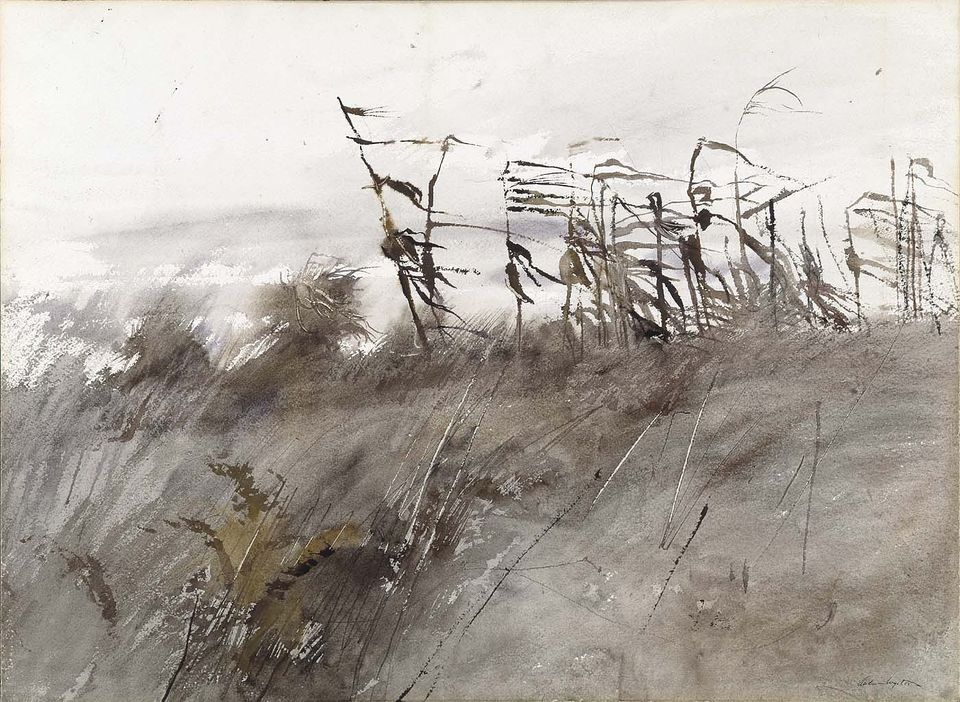
Edward Winkleman wrote about Andrew Wyeth recently, commenting on the distinction between art we love for the pure visual pleasure it provides and the art we value conceptually. Winkleman observes, "In the end, this discussion seems to turn on whether we place more value on concept or pleasure in artwork. . . . [I]f we're honest, we'll admit we don't have as many qualms about celebrating concept sans pleasure . . . it's just the other way around that makes us squeamish."
Donald Kuspit touches on Wyeth in a long essay about that artist, Lucian Freud, Francis Bacon, and the philosophy of portraiture. (Notably, this is probably the first essay I've read comparing Wyeth to other artists that doesn't name-check Norman Rockwell.) Kuspit says that a successful portrait involves "what the psychoanalyst Donald Winnicott calls a creative apperception, so much so that it makes us forget, for a moment, the art involved in achieving the illusion, appreciating the work as an insight into experience rather than approaching it as a discourse to be analyzed."
ARTnews weighs in with an editorial that quotes, well, just about anyone and everyone else with something to say about Wyeth. Will "Andrew Wyeth: Memory and Magic"—the artist's first (!) major retrospective—be the most talked about show of the fall?
By "pleasure" Winkleman refers to those characteristics that distinguish art like Wyeth's from most of his peers. I think that one of those characteristics is autonomy: Wyeth doesn't paint himself into his work the way that Bacon or Freud does (to borrow Kuspit's examples). By preserving the autonomy of his models and scenes—that is, by not editorializing on the subject of the painting, or history of painting, or process of painting, and so on—Wyeth steps out of the way of the viewer's perceptual understanding of the subject.
That perceptual transparency brings draughtsmanship to the forefront. Wyeth isn't working alone in this realm. What's so different between the way that we approach Wyeth and how we see, say, early photorealist paintings by Chuck Close, or contemporary trompe l'oeil works by Kaz Oshiro? And if there isn't an appreciable difference—meaning that an artist can get away with the same approach to "apperception" without being labeled a lightweight—isn't the controversy over Wyeth actually a question over whether there's any punch left in realist painting itself?




















